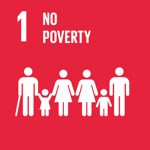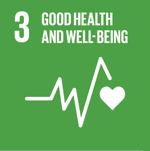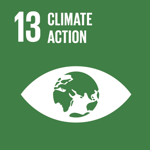Sustainable control of citrus greening vector in family farming
 Argentina
Argentina
 Bolivia
Bolivia
 Paraguay
Paraguay
 Uruguay
Uruguay
Executive Summary
Huanglongbing (HLB) or citrus greening, caused by a bacterium (Candidatus Liberibacter spp.), is the most important disease in global citriculture, transmitted by the insect vector Diaphorina citri. The aim of the project co-financed by FONTAGRO was to prevent the advance of HLB in the region, with the purpose of adapting, disseminating and increasing awareness of integrated pest management (IPM) technology in the control of the HLB vector of citrus fruits in family farming (FF). Seventeen IPM demonstrator plots (DP) and 17 conventional plots (CP), geo-referenced, were installed on family citrus farms in Argentina, Uruguay and Paraguay. The vector was monitored through three methods: beating, visually and yellow adhesive card. A total of 1,030 monitoring sessions were conducted, detecting Diaphorina citri at 7 sites and plants with HLB at 2 sites. The integration of the three methods of Diaphorina citri monitoring was key to ensuring early detection and to act on population control, reducing the risk of vector and disease spread. The IPM implemented (systematic monitoring, chemical control with phytosanitary products of low environmental impact, biological and ethological control, and cultural measures) resulted in reductions in HLB vector populations between 60-99% in 3 sites when comparing DP to CP. An increase in natural enemies from 17% to 332% was recorded at 11 sites, explained by the use of low toxicological-class phytosanitary products and cultural measures, among other practices. Impacts of IPM on DPs were evaluated: 17 sustainability assessments, 29 fruit quality analyses and 26 economic analyses. The average environmental impact sustainability index for the sites evaluated was positive, validating the benefits of using IPM. Improvements in fruit quality were evidenced by lower disease incidence and/or reduced pest pressure. The economic analysis shows that while direct IPM costs increased, gross margins were consistently higher in some DPs from the second or third season onwards. We highlight the design and implementation of three editions of a virtual/on-site monitoring course on the INTA PROCADIS platform; the design and implementation of an alert system with access to the BioTic-FONTAGRO HLB Web platform (citrus section); a prototype of an App for uploading monitoring records; two FONTAGRO websites; and a communication campaign for the prevention and management of HLB-vector with printed and digital communication through social media. Training, awareness-raising, communication and participatory work reached 22,900 people, including family farmers, workers, technicians, professionals, students, institutional representatives and other actors in the sector. To date, 13 outputs (with 307 Technical Notes and Workshop Reports), 2 manuals and 10 scientific articles have been published.
Key words: Alert system, Diaphorina citri, Family citrus farming, HLB, Huanglongbing, IPM.
The technological solution
- Local adaptation of integrated pest management (IPM) technology in family citrus farming (FF) with a focus on the control of the HLB vector, through the application of monitoring practices, the use of safe products that preserve the natural balance and the use of biologicals in IPM demonstration plots on family citrus farms.
- Training, communication and awareness-raising for family farmers, professionals and other stakeholders in the citrus sector about HLB, the vector and its natural enemies.
- Monitoring the impact of IPM on the sustainability, fruit quality and economic situation of the FF in order to contribute to the innovation process.
- Promoting of collective innovation management to scale the technological proposal (participatory work with beneficiaries in the selection of demonstration plots, progress and results of the project).
Results
A total of 1,030 monitoring were conducted, detecting Diaphorina citri at 7 sites and plants with HLB at 2 sites. The integration of the three methods of Diaphorina citri monitoring was key to ensuring early detection and to act on population control, reducing the risk of vector and disease spread. The IPM implemented (systematic monitoring, chemical control with phytosanitary products of low environmental impact, biological and ethological control, and cultural measures) resulted in reductions in HLB vector populations between 60-99% in 3 sites when comparing DP to CP. An increase in natural enemies from 17% to 332% was recorded at 11 sites, explained by the use of low toxicological-class phytosanitary products and cultural measures, among other practices. Impacts of IPM on DPs were evaluated: 17 sustainability assessments, 29 fruit quality analyses and 26 economic analyses. The average environmental impact sustainability index for the sites evaluated was positive, validating the benefits of using IPM. Improvements in fruit quality were evidenced by lower disease incidence and/or reduced pest pressure. The economic analysis shows that while direct IPM costs increased, gross margins were consistently higher in some DPs from the second or third season onwards. We highlight the design and implementation of three editions of a virtual/on-site monitoring course on the INTA PROCADIS platform; the design and implementation of an alert system with access to the BioTic-FONTAGRO HLB Web platform (citrus section); a prototype of an App for uploading monitoring records; two FONTAGRO websites; and a communication campaign for the prevention and management of HLB-vector with printed and digital communication through social media. To date, 13 outputs (with 307 Technical Notes and Workshop Reports), 2 manuals and 10 scientific articles have been published.
Beneficiaries
The direct beneficiaries of the Project were: more than 22,900 family farmers (FF) and other types of producers, students, technicians, professionals, institutional representatives were reached by the project. Among them, more than 3,400 people were trained and participated in workshops, most of whom were FF, more than 15,300 people were informed and made aware of HLB and the vector, 4,000 printed manuals were delivered in Argentina, Uruguay, Paraguay and Bolivia.
Indirect beneficiaries were another 3,000 family farmers, the citrus sector as a whole and consumers in the four countries.
Sustainable Development Goals






Project news
Participating Organizations
Executor
- Fundación ArgenINTA (ARGENINTA) - Argentina
Co-executor
- Instituto Nacional de Tecnología Agropecuaria (INTA) - Argentina
- Instituto Nacional de Investigación Agropecuaria (INIA) - Uruguay
- Universidad Nacional de Itapúa (UNI Paraguay) - Paraguay
- Gobierno Autónomo Municipal de Bermejo (GAM Bermejo) - Bolivia
Associated
- Servicio Nacional de Sanidad y Calidad Agroalimentaria (SENASA) - Argentina
- Federación Argentina del Citrus (FEDERCITRUS) - Argentina
- Unión de Productores y Exportadores Frutihortícolas del Uruguay (UPEFRUY) - Uruguay
Graphics and data
Financing by country (in USD)









































